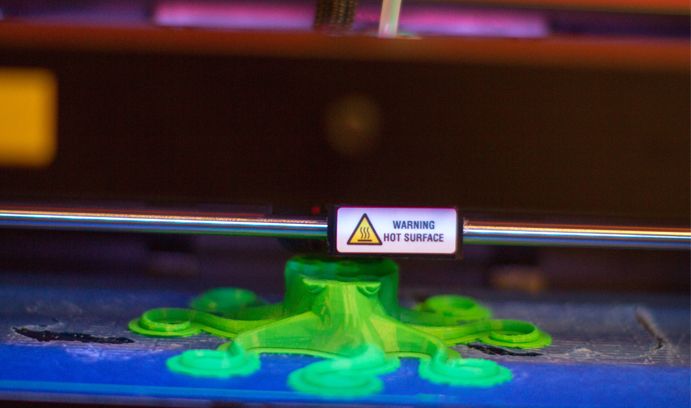You’re on a multiyear mission to Mars, operating a robotic explorer and collecting rock samples, when a key component breaks. You don’t have a full machine shop, and you are years from a spare part delivery. How can you get the explorer back in service?
That’s the kind of challenge that faced 50 rising high school seniors at the Pennsylvania Governor’s School for Science, Engineering and Technology, a selective two-week program held at Lehigh during the summer of 2014.
Armed with insights into computer-aided design, 3D printing and mechanical testing, students split into teams to tackle the problem. At Fritz Lab they used software to predict the strength of designs under load. At Wilbur Powerhouse they watched 3D printers work and learned how additive manufacturing could produce working parts for the explorer.
“It’s like science fiction,” said Amelia Trello of Mt. Lebanon. “It’s a technology that can change the world as we know it.”
Theory became reality in Prof. Richard Vinci’s Mechanical Behavior Lab, where, on Instron testers, the students applied stress to parts of varying composition and design. Gathered around the instruments, the students dialed in stress levels to determine tensile strength and rigidity. Each audible snap drew a cheer when a group learned its part’s failure point.
If the Mars mission was fiction, the students’ exposure to the range of problems solved by engineers was real. The Governor’s School is an effort by the state to encourage top students to consider careers in STEM fields—Science, Technology, Engineering and Mathematics.
The goal of the school was threefold, said academic director William Best, who directs Lehigh’s IDEAS (Integrated Degree in Engineering, Arts and Sciences) program.
“Our vision,” said Best, “is for students to learn that engineering is a unique way of thinking, that it is an art form, and that everything engineers do has profound social implications. Engineers can never forget their ethical obligations to the society they serve.”
“Young people are inundated with technology,” said Laura Moyer ’99, ’05 Ph.D., lab manager for the materials science and engineering department, who helped plan the school. “It is so important for them to learn how things work.”
The state invited Lehigh to host the school, and the engineering college and Iacocca Institute created the program. Some 180 students from around the state applied.
Drawing on faculty and on industry connections at NASA and AT&T, the program covered bioengineering, nanotechnology, energy, additive manufacturing, robotics, cybersecurity and other “big-picture themes,” said Moyer.
Trello, who is not sure whether to pursue science or liberal arts, said the program may help her decide. “The engineering part is amazing!”
Evan Mehok, who is near the top of a 95-member high school class in rural Guys Mills, found it energizing to work with “other nerds. It’s been a life-changing experience,” he said. “You learn that you have to keep asking the ‘Why?’ questions.”
The students attended presentations by professors, did hands-on work and teamed up to work on projects that they described at poster presentations at the end of the second week.
“It feels intense,” said Kevin Monpara of Upper St. Clair. “The days are long—breakfast to 11 p.m.—and they blur together.”
“They’ve done a really nice job showing us all aspects of engineering,” said Taylor Pawlik of Huntingdon Mills. “The cool part is seeing all the things you can do as an engineer.”
Pawlik’s team, mentored by Austin Keller ‘16, sought to apply nanomedicine to help close the health gap between rich and poor nations.
The topic, said Keller, a materials science and engineering major, aligns with Lehigh’s philosophy of developing “citizen-engineers” aware of the social, environmental and economic impacts of their work.
The in-depth, hands-on lessons at the Governor’s School are missing from many high schools, rich and poor, said Bill Bertrand, technical education adviser for Pennsylvania’s Department of Education (PDE), which sponsored the school. “That’s where I see the biggest plus. This school gives students an understanding of just what it takes to go through a college engineering program.”
Pawlik’s eyes were opened during a visit with Lehigh student researchers. She came to the Governor’s School with plans to go to medical school, but may change directions after bioengineering majors demonstrated a prosthetic hand. “They really opened up a whole new idea of what I can do,” she said.
Trello learned engineering was broader than she expected. “As an engineer you can combine your skills to do so many things, like cleaning up the environment.”
The need to collaborate also broadened students’ horizons. “Here, in one room, you have kids who are all top-tier in their high schools,” Trello said. “It’s a whole new level of social interaction. We have to figure out our strengths and use them for the good of the group.”
PDE funded the school so students could attend free. AT&T provided $25,000. In July, Pennsylvania Gov. Tom Corbett announced that the school would be held for four weeks at Lehigh in 2015, funded by $150,000 from the TEAM PA Foundation, a public-private partnership.

